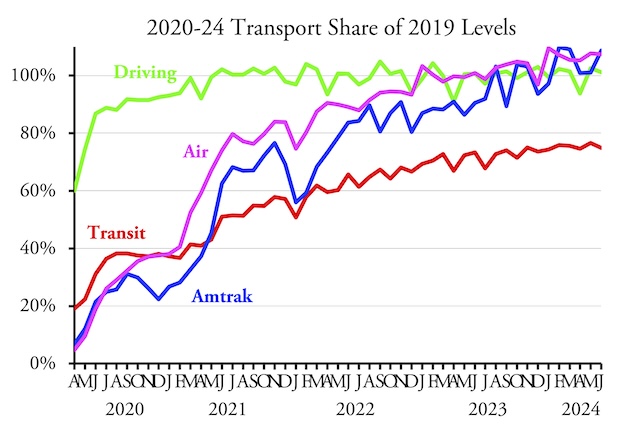Americans drove 1.2 percent more miles in June of 2024 than the same month before the pandemic, according to traffic data released yesterday by the Federal Highway Administration. Rural driving was up 7.4 percent while urban driving was 1.8 percent short of 2019 levels. Urban driving may be slow to catch up to pre-pandemic levels due to people working at home but in all probability is mostly due to the migration of the most mobile people away from certain urban areas.
See the August 8 post for a discussion of transit and flying and last Tuesday’s post for a discussion of Amtrak.
Even with those changes, June urban driving in Colorado was 16.5 percent greater in 2024 than 2019. It was also greater in Nevada (15%), Utah (15%), Arkansas (12%), New Mexico (12%), and Texas (11%). Michigan, Missouri, and Nebraska saw 8 percent more urban driving and a total of 23 states all saw more urban driving in 2024 than 2019.
The states where urban driving remained well below 2019 levels included West Virginia (82%), Massachusetts (83%), Illinois (84%), and Montana (88%), while DC was 79 percent. California, Delaware, Hawaii, Maryland, North Dakota, and Washington were all in the low 90s. Census data indicate that California, DC, Hawaii, Massachusetts, Maryland, and Washington have all seen net domestic out-migration since 2020, while most of the states where urban driving has grown have seen net domestic in-migration.
There are exceptions: New Mexico lost residents yet urban driving grew while Montana gained residents yet urban driving shrank. This may be because people moving into or out of these states were not urbanites. In any case, changes in urban populations are a major factor if not the major factor in urban driving.








